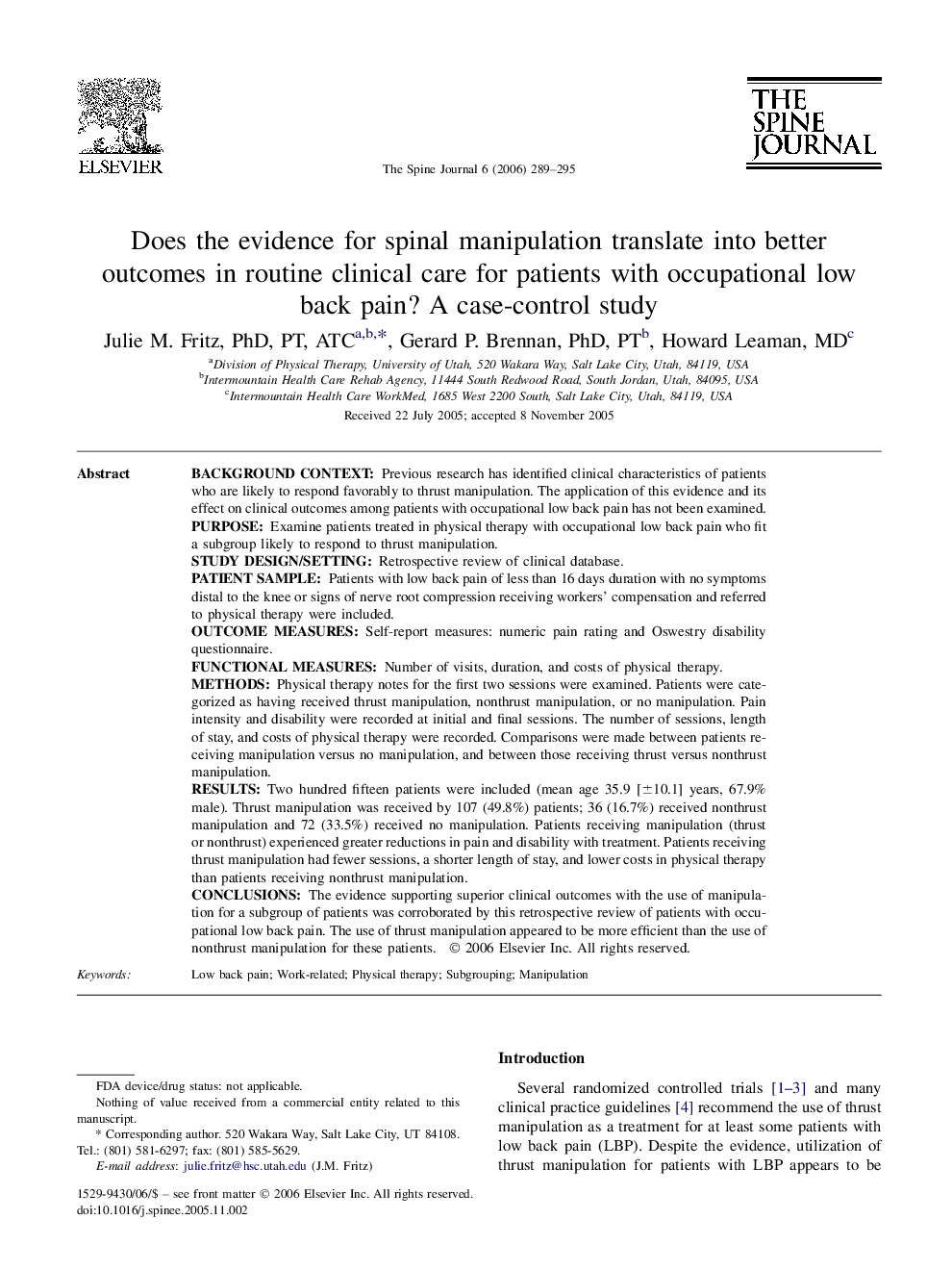| کد مقاله | کد نشریه | سال انتشار | مقاله انگلیسی | نسخه تمام متن |
|---|---|---|---|---|
| 4100345 | 1268686 | 2006 | 7 صفحه PDF | دانلود رایگان |

Background contextPrevious research has identified clinical characteristics of patients who are likely to respond favorably to thrust manipulation. The application of this evidence and its effect on clinical outcomes among patients with occupational low back pain has not been examined.PurposeExamine patients treated in physical therapy with occupational low back pain who fit a subgroup likely to respond to thrust manipulation.Study design/settingRetrospective review of clinical database.Patient samplePatients with low back pain of less than 16 days duration with no symptoms distal to the knee or signs of nerve root compression receiving workers' compensation and referred to physical therapy were included.Outcome measuresSelf-report measures: numeric pain rating and Oswestry disability questionnaire.Functional measuresNumber of visits, duration, and costs of physical therapy.MethodsPhysical therapy notes for the first two sessions were examined. Patients were categorized as having received thrust manipulation, nonthrust manipulation, or no manipulation. Pain intensity and disability were recorded at initial and final sessions. The number of sessions, length of stay, and costs of physical therapy were recorded. Comparisons were made between patients receiving manipulation versus no manipulation, and between those receiving thrust versus nonthrust manipulation.ResultsTwo hundred fifteen patients were included (mean age 35.9 [±10.1] years, 67.9% male). Thrust manipulation was received by 107 (49.8%) patients; 36 (16.7%) received nonthrust manipulation and 72 (33.5%) received no manipulation. Patients receiving manipulation (thrust or nonthrust) experienced greater reductions in pain and disability with treatment. Patients receiving thrust manipulation had fewer sessions, a shorter length of stay, and lower costs in physical therapy than patients receiving nonthrust manipulation.ConclusionsThe evidence supporting superior clinical outcomes with the use of manipulation for a subgroup of patients was corroborated by this retrospective review of patients with occupational low back pain. The use of thrust manipulation appeared to be more efficient than the use of nonthrust manipulation for these patients.
Journal: The Spine Journal - Volume 6, Issue 3, May–June 2006, Pages 289–295